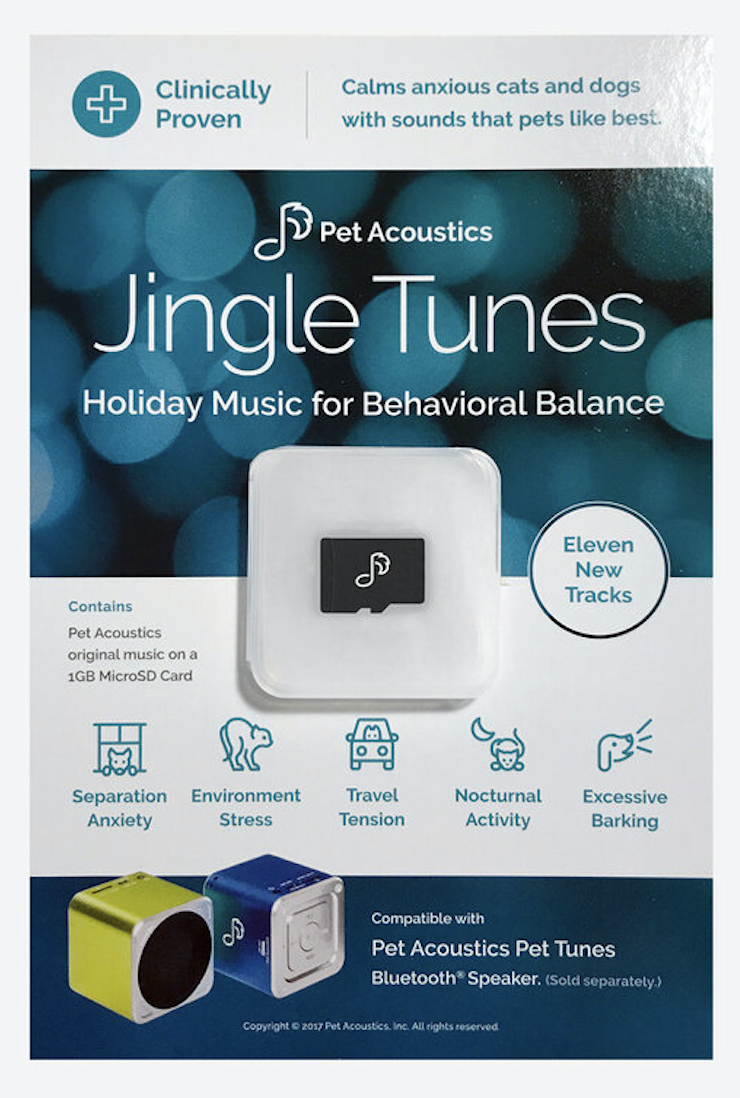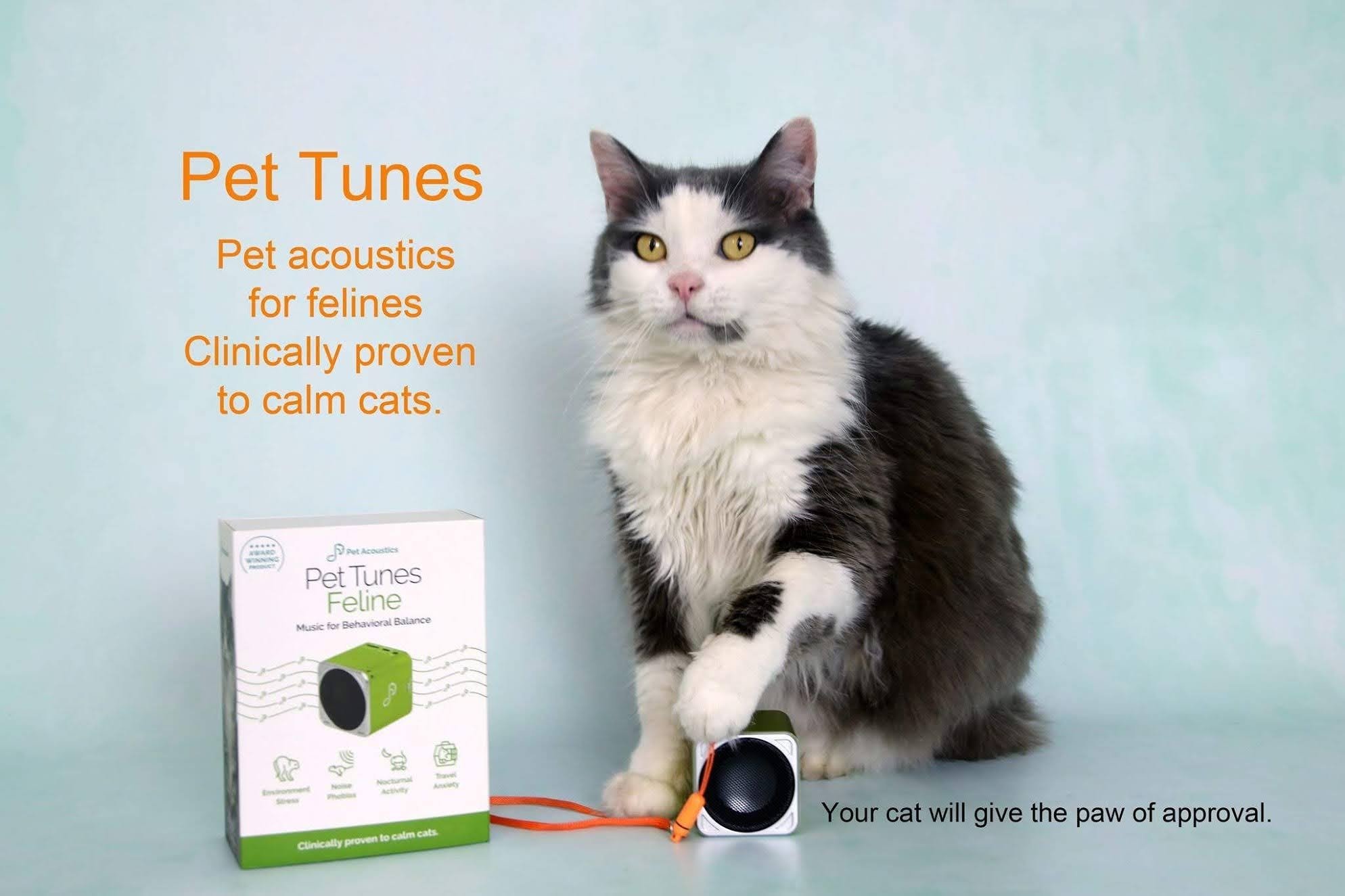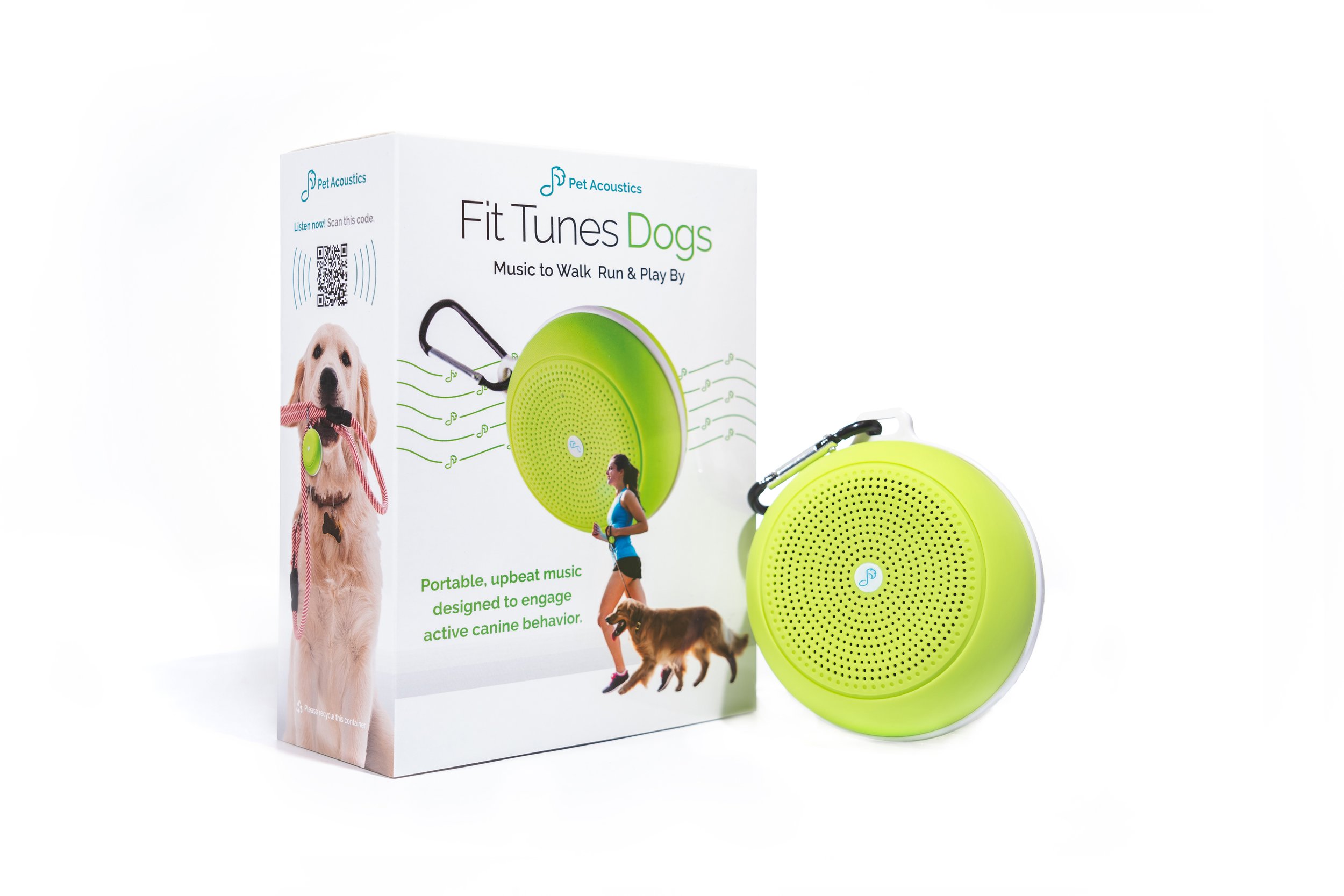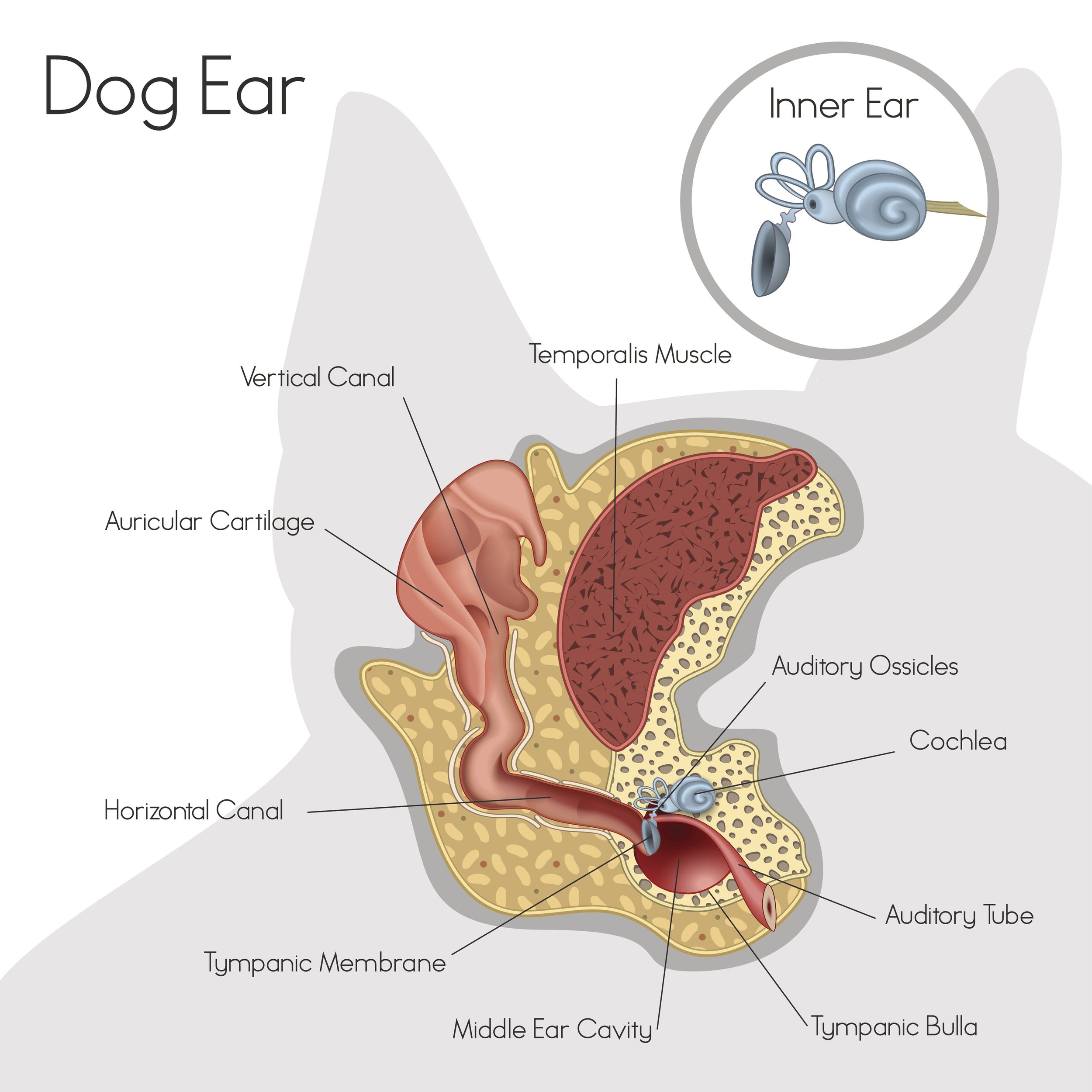How your pet hears sound?
The ear is composed of several structures that work together to process sound. When sound waves enter the ear, they travel through the external ear canal and cause the eardrum (tympanic membrane) to vibrate. These vibrations are then transmitted through the middle ear to the inner ear.
The middle ear of a dog or cat contains three small bones called ossicles: the malleus, incus, and stapes. These bones amplify the vibrations received from the eardrum and transmit them to the inner ear. The inner ear contains the cochlea, which is responsible for converting sound vibrations into electrical signals that can be interpreted by the brain.
Sound waves can cause vibrations in the eardrum and subsequent movements of the middle ear bones. Excessive sound intensity, high and low frequencies or sudden loud noises can potentially cause discomfort, temporary hearing loss, or damage to the delicate structures of the ear in pets.
The brain processes the electrical signals received from the auditory nerve and interprets them as sound. This allows your pet to perceive and understand different sounds in their environment.
How we design sound for your pet’s ears.
Our Pet Acoustics® proprietary process innovated by Janet Marlow in 1997, called “species-specific music”, modifies sound waves within designed music to be the most comfortable for the mechanism of pet hearing. Frequencies and volume levels that trigger stress are modified according to each animal’s comfort hearing range.
The results of our Pet Acoustics® music maintains hearing health in animals, elicits behavioral balance and lessens stress in their living environment.
Pet Tunes Canine used at the Fidelco Guide Dog Foundation (video)
Pet Tunes Pro is a multi-sensory speaker that calms dogs and cats with Pet Acoustics® science-based music, light colors, and nature sounds. Proven through biometric studies, Pet Acoustics@ proprietary sound design relieves pet stress for wellness in veterinary, kennel and home environments.
Dogs identify hues of blue-violet and cats hues of yellow-green. Light and colors help reduce stress levels in dogs and cats. Easy Touch tap on the speaker changes color choices. Enhances veterinary and kennel environments.
Pet Parents! Use Pet Tunes Pro to lessen anxiety in the veterinary exam room. Video shows Rigby go from anxiety to calm while seeing soothing colors and listening to the music.
Pet Parent Review -“Mitzi and I got your Pet Tunes Pro in the mail a few days ago. Mitzi and l have been listening to it almost continuously since. She absolutely loves it. The quality of the device and the music is exceptional."










































